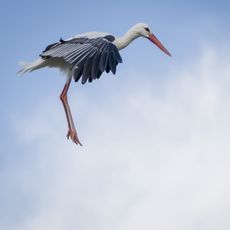Leonardo da Vinci: Anatomist
Another chance to see the works of Leonardo da Vinci this summer is at the Royal Collection at Buckingham Palace


Following the sellout exhibition at the National Gallery, there is a further chance to see the works of Leonardo da Vinci as The Queen's Gallery, Buckingham Palace, SW1, is showing an exhibition of the artist's studies of the human body.
Leonardo was an assiduous researcher of the human form, working in hospitals and dissecting bodies, often those of executed criminals. He intended to publish his groundbreaking work, which includes detailed studies of a human skull, a baby in utero and investigations of the heart, but, when he died in 1519, it had become swamped by other work.
His successors at the Court of Milan pasted the papers into albums, which arrived in England in the 17th century, probably acquired by Charles II.
‘Leonardo da Vinci: Anatomist' starts this week, on May 4 (until October 7, 020-7766 7301; www.royalcollection.org.uk).
to Country Life and save £40%
Sign up for the Country Life Newsletter
Exquisite houses, the beauty of Nature, and how to get the most from your life, straight to your inbox.
Country Life is unlike any other magazine: the only glossy weekly on the newsstand and the only magazine that has been guest-edited by HRH The King not once, but twice. It is a celebration of modern rural life and all its diverse joys and pleasures — that was first published in Queen Victoria's Diamond Jubilee year. Our eclectic mixture of witty and informative content — from the most up-to-date property news and commentary and a coveted glimpse inside some of the UK's best houses and gardens, to gardening, the arts and interior design, written by experts in their field — still cannot be found in print or online, anywhere else.
-
 A well-connected rural playground with 23 acres on the edge of the South Downs National Park
A well-connected rural playground with 23 acres on the edge of the South Downs National ParkOld House Farm is an impressive family home with a wealth of amenities that would inspire any rural passion.
By Arabella Youens Published
-
 The UK gets its first ‘European stork village’ — and it's in West Sussex
The UK gets its first ‘European stork village’ — and it's in West SussexAlthough the mortality rate among white storks can be up to 90%, the future looks rosy for breeding pairs in southern England.
By Rosie Paterson Published
